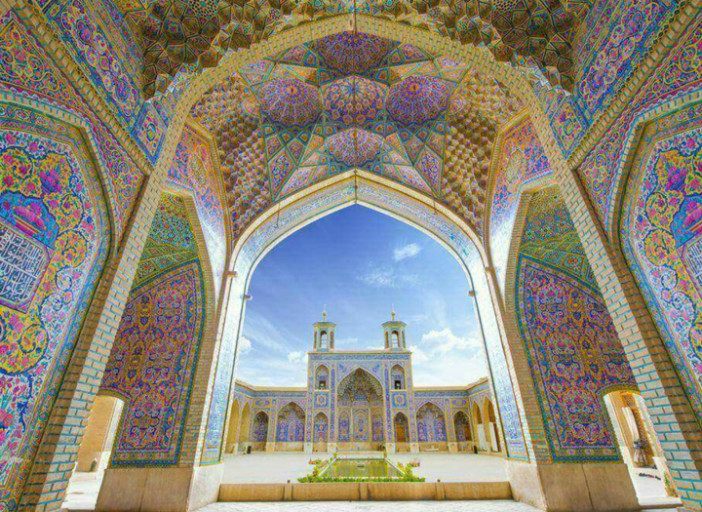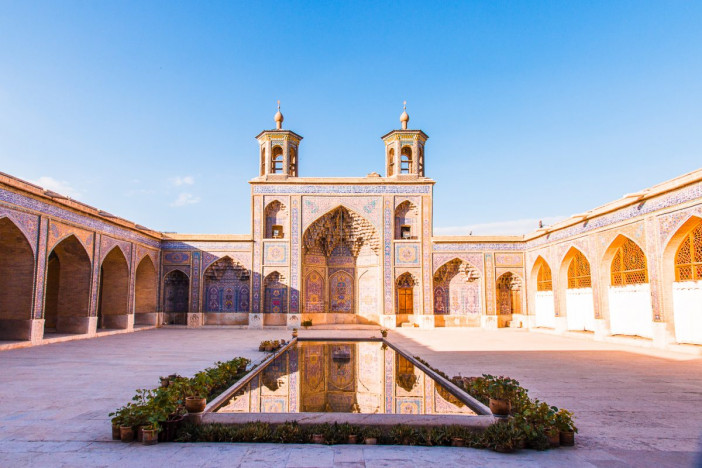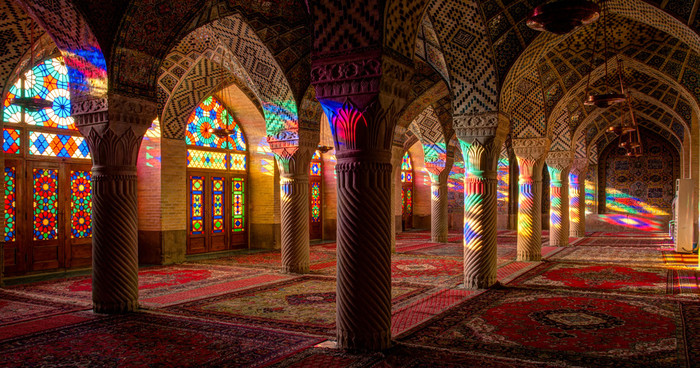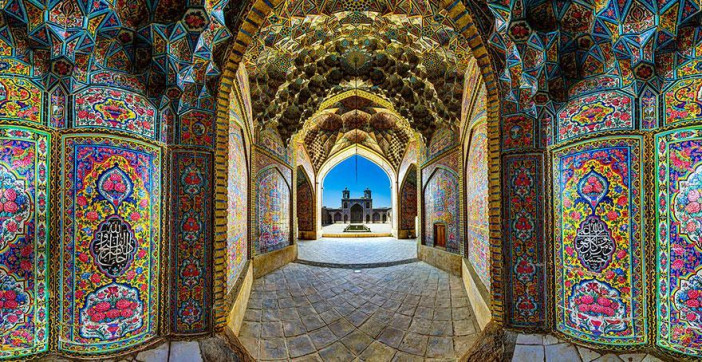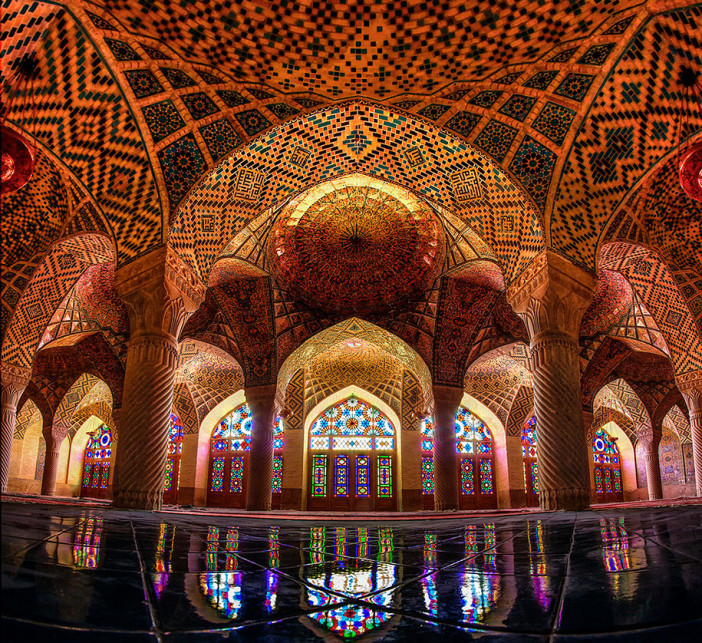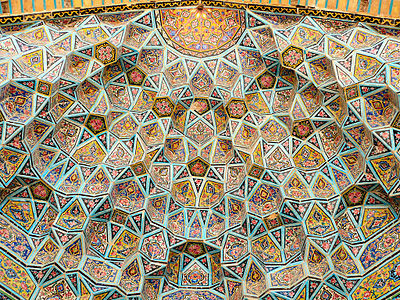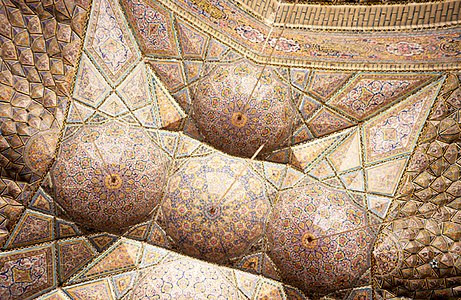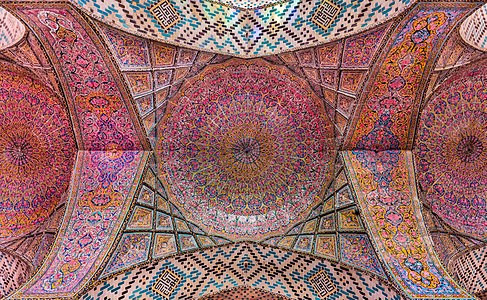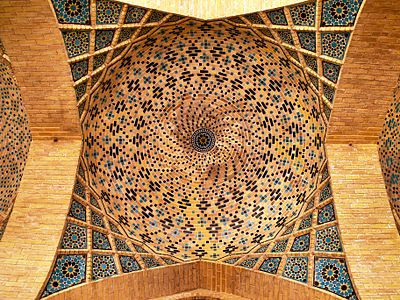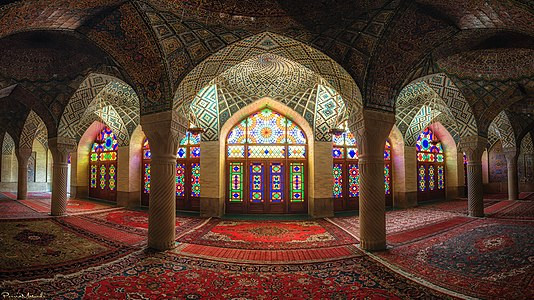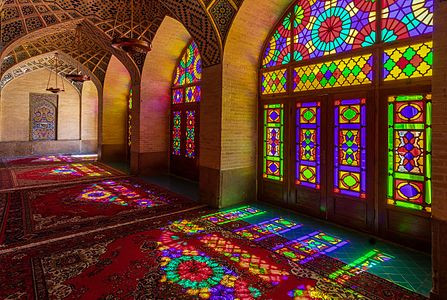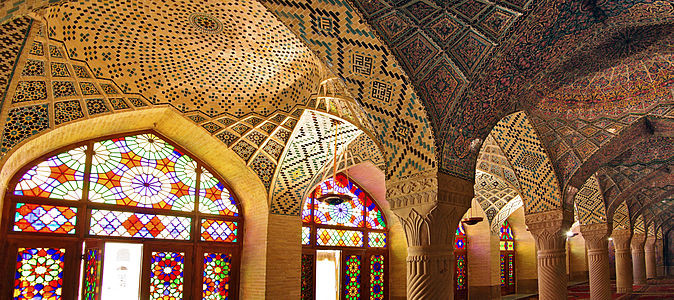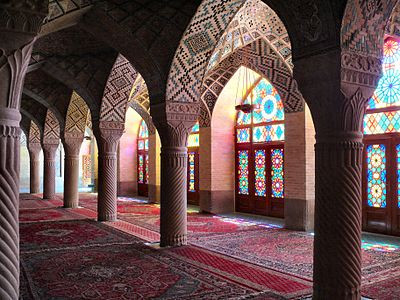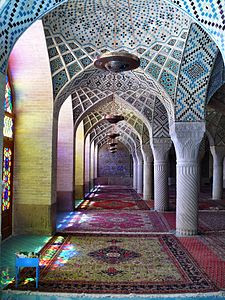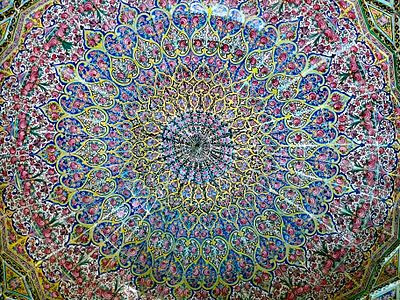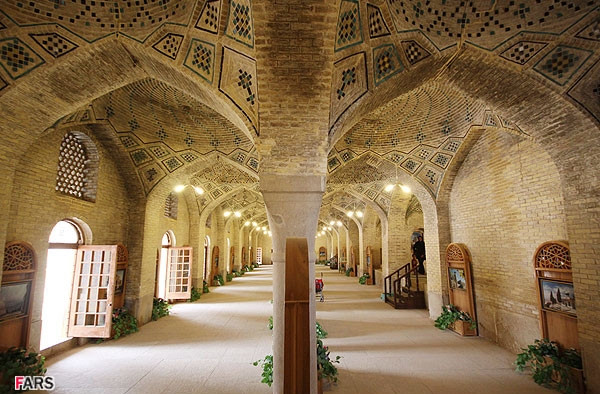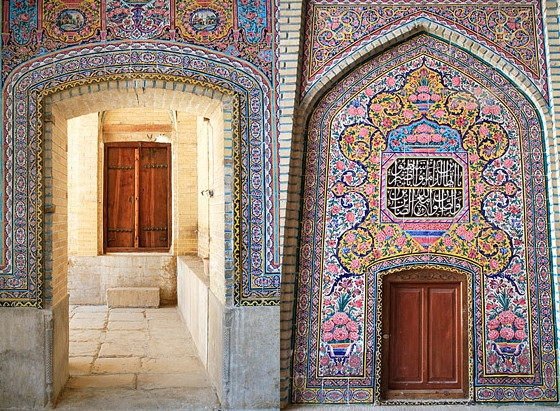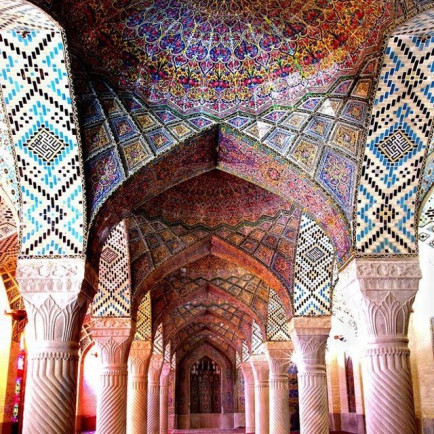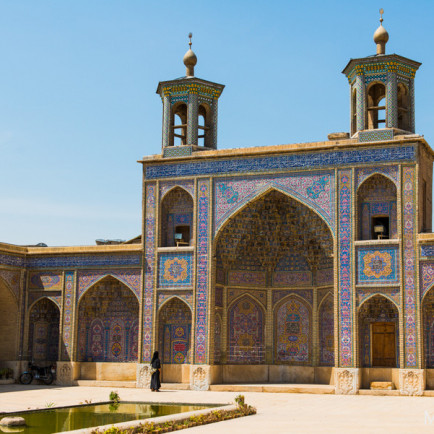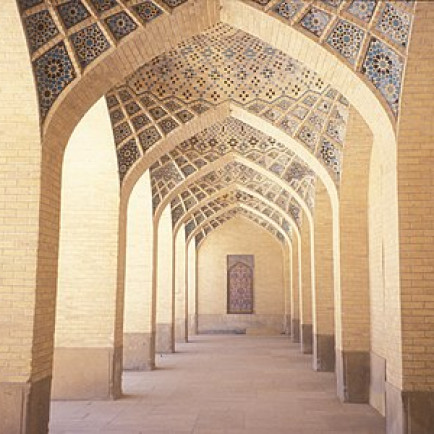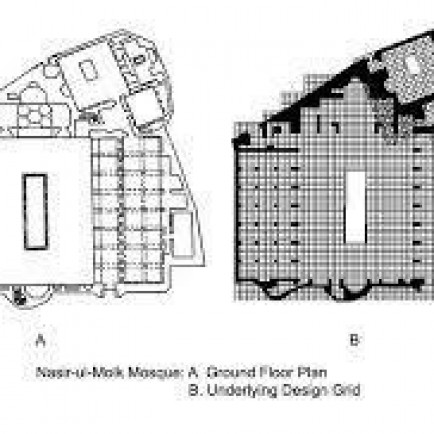Nasir Al mulk Mosque
History
The mosque was built during the Qajar dynasty, and is still in use under protection by the Endowment Foundation of Nasir ol Molk. Construction began in 1876 by the order of Mirzā Hasan Ali (Nasir ol Molk), a Qajar ruler. and was completed in 1888, The designers were Mohammad Hasan-e-Memār, an Iranian architect, and Mohammad Rezā Kāshi-Sāz-e-Širāzi.
Urban and Architectural
The mosque includes extensive coloured glass in its facade, and displays other traditional elements such as the Panj Kāse ("five concaved") design. It is named in popular culture as the 'Pink Mosque.due to the usage of considerable pink colour tiles for its interior design.
The exterior looks like any other formal mosque, but the interior boasts of remarkable piece of architecture. The inner courtyard features the typical arch gates, synonymous with Islamic architecture but its unique blue glazed tiles, intricate carved ceilings and intricate Koranic inscriptions makes the mosque a sheer work of art.
The interiors have ornate arches and chandeliers all dotted in an beautiful pattern of glazed tiles and fine Persian carpets that create stunning contrasts. Coloured glass adds myriad shades inside this beautiful mosque. At the crack of the dawn, the stained glass reflects on the surface forming a wonderful astonishing pattern.
Description
The Nasir al-Mulk Mosque also known as the Pink Mosque , is a traditional mosque in Shiraz, Iran. It is located in Gawd-i Arabān quarter, near Shāh Chérāgh Mosque. It was built during Qajar dynasty rule of Iran.
References
http://shof.co.il/?mod=articles&ID=9533
http://forum.negahdl.com/threads/159519/
https://ar.wikipedia.org/wiki/مسجد_نصير_الملك
https://en.wikipedia.org/wiki/Nasir-ol-molk_Mosque
https://www.holidayme.com/explore/the-most-beautiful-mosques-in-the-world/
https://en.wikipedia.org/wiki/Nasir-ol-molk_Mosque
Details
Location
Shiraz, Lotf Ali Khan Zand Street، Iran
Year of Build
1888
Drawings
Map
History
The mosque was built during the Qajar dynasty, and is still in use under protection by the Endowment Foundation of Nasir ol Molk. Construction began in 1876 by the order of Mirzā Hasan Ali (Nasir ol Molk), a Qajar ruler. and was completed in 1888, The designers were Mohammad Hasan-e-Memār, an Iranian architect, and Mohammad Rezā Kāshi-Sāz-e-Širāzi.
Urban and Architectural
The mosque includes extensive coloured glass in its facade, and displays other traditional elements such as the Panj Kāse ("five concaved") design. It is named in popular culture as the 'Pink Mosque.due to the usage of considerable pink colour tiles for its interior design.
The exterior looks like any other formal mosque, but the interior boasts of remarkable piece of architecture. The inner courtyard features the typical arch gates, synonymous with Islamic architecture but its unique blue glazed tiles, intricate carved ceilings and intricate Koranic inscriptions makes the mosque a sheer work of art.
The interiors have ornate arches and chandeliers all dotted in an beautiful pattern of glazed tiles and fine Persian carpets that create stunning contrasts. Coloured glass adds myriad shades inside this beautiful mosque. At the crack of the dawn, the stained glass reflects on the surface forming a wonderful astonishing pattern.
Description
The Nasir al-Mulk Mosque also known as the Pink Mosque , is a traditional mosque in Shiraz, Iran. It is located in Gawd-i Arabān quarter, near Shāh Chérāgh Mosque. It was built during Qajar dynasty rule of Iran.



